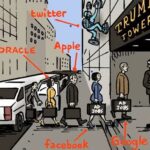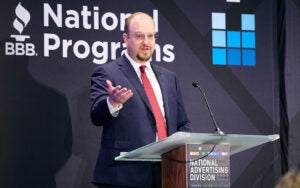“Data-Driven Thinking” is written by members of the media community and contains fresh ideas on the digital revolution in media.
Today’s column is written by Rishad Tobaccowala, author of “Restoring the Soul of Business: Staying Human in the Age of Data.”
Even as the world becomes more silicon-based, data-driven and digital, we are deluding ourselves if we do not remember that people are carbon-based, driven and highly analog beings.
In a connected age of hyperlinks, networks and algorithms, the true connection always will be between people and stories and not just machines and spreadsheets.
While we live in a connected age, it is not the technology that connects. Technology and software, whether it be Slack, Skype, Zoom or Google Docs, enable. People connect.
And then COVID-19 happened.
Overnight remote workforce
Today as you read this in the last week of March 2020, you are working from home whether you want to or not. Forrester’s 2013 estimate that in a few years 43% of the workplace would be working from home seemed optimistic at the time but has significantly undershot today’s reality.
There are many benefits of remote work, including (a) increased inclusiveness by ensuring more people can be tapped for their skills, regardless of where they live; (b) greater flexibility for young parents or those looking after elders; (c) lower costs for companies; and (d) time savings, as workers do not need to commute.
Working with modern computing and telecommunication solutions also allows for greater access to data and an ability to communicate with better visuals and multimedia.
However, these advantages come at a cost. We may lose focus as we grapple with other distractions, such as pets, significant others and kids. Communication may diminish as we multitask. And relationships may weaken when important physical signals, such as sidebar conversations or facial expressions, are lost.
AdExchanger Daily
Get our editors’ roundup delivered to your inbox every weekday.
Daily Roundup
But there are several ways leaders can leverage remote workforces and the benefits of modern technology while minimizing the loss of focus, communication and relationships.
Be human and acknowledge that everyone is grappling with anxiety, fear and uncertainty
We are anxious about our health and the health of our loved ones and team members. We are fearful about the future of our finances, jobs and society. We are gripped with uncertainty since every day brings new changes, challenges, uncharted territory and unclear timelines.
These emotions have made all the downsides of remote working particularly acute. We have trouble focusing when the headlines warn of doom and our kids are not at school. It is harder to communicate about business when, while critical, it seems so secondary to the challenges we face. With no in-person contact, relationships can weaken.
Communicate constantly
Connect with your teams and organizations at least once a week, if not more often, so they can count on these scheduled interactions in these uncertain times. People may fill the vacuum with speculation, and in these difficult times, silence is chilling. At Publicis the CEO addresses all 80,000 people every weekend, which is both realistic and inspiring. Ensure there are many channels and ways for people to not feel isolated.
Augment business meetings with personal conversations
Whether you have team-wide or one-to-one meetings, take time after the business discussions end for non-work conversation.
The simplest and best way to do this is to reach out to your immediate reports and colleagues with a simple question: How can I help?
These interactions, which we would have over lunch or in the hallway, are critically important for both the conduct of business and our souls. Please make time for them.
Focus on the five key traits of leadership in every conversation and communication
My research and experience has taught me that the best leaders display five traits: capability, integrity, empathy, vulnerability and inspiration.
Capability: This is when you breathe deeply and become the leader, team member and employee you are to the best of your abilities. Your potential to work under pressure and your company’s values and purpose will be tested now.
Integrity: Make sure that you are truthful, including when you do not know the answers and cannot predict outcomes for the business or people’s roles and jobs.
Empathy: Recognize that each person you are interacting with has their own special challenges.
Vulnerability: Share your own worries and concerns, as Jeff Bezos of Amazon and Satya Nadella of Microsoft did with their organizations last weekend.
Inspiration: Try to end every conversation during these difficult times by leaving people with energy, belief and hope. This too will pass, even though it will not be easy. If you read the Microsoft and Amazon notes, you will be inspired.
Leverage art and storytelling
The French philosopher Blaise Pascal noted that we choose with our hearts and use numbers to justify what we just did. Joan Didion, the essayist, has written that we tell stories in order to live.
Art and storytelling important like it never has been before. This is true for all of us in the media and ad tech space who may be more comfortable with data and facts. We need to share heroic stories of our doctors and critical workers, who are risking everything, and of companies and leaders who are rising to the occasion.
We should use humor and YouTube videos to help us tell stories. Art has helped inspire, heal, frame and connect us to ourselves and each other. Read books. Watch great movies and not just CNN.
Our current challenges will be overcome.
’Til then, stay safe and be human.
Follow Rishad Tobaccowala (@rishad) and AdExchanger (@adexchanger) on Twitter.













